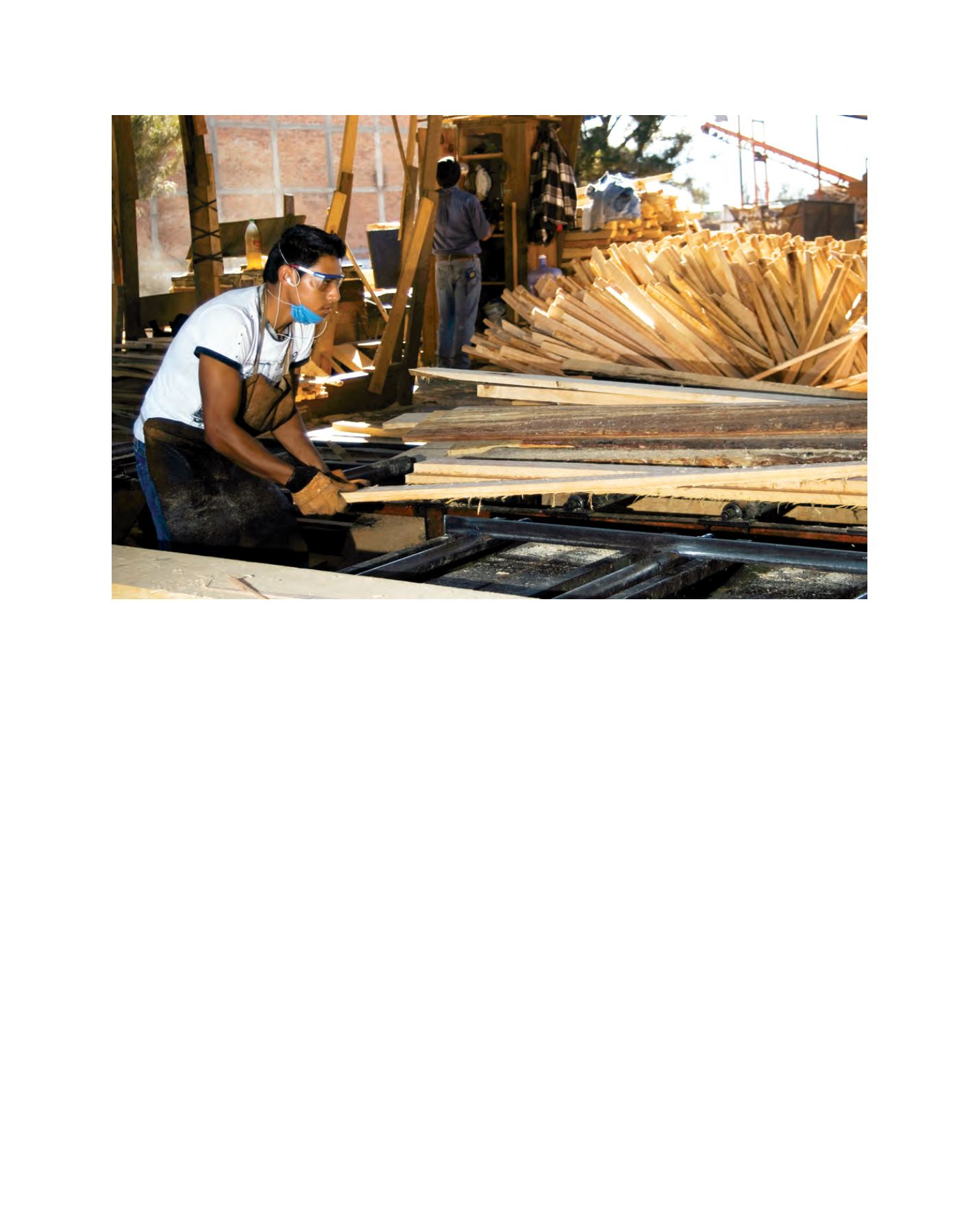

[
] 272
Undoubtedly, with the progress made since 2001, and
particularly since 2007, Mexico has managed to establish
a route to sustainable forest development, characterized
at the global level, for its achievements in forest conserva-
tion issues. Despite the challenges faced in this area, our
country is currently one of the nations with the largest area
of first-growth forests and is also one of the five nations
that had the largest decrease of first-growth forests in the
last 20 years. According to FAO, Mexico has the sixth
highest annual increase in the planted forest area for the
period 1990-2010, with 178 thousands hectares, and has
the sixth largest afforestation and seventh largest reforesta-
tion areas, with an average of 247,600 hectares per year.
Vision for the future
Even with the progress achieved through the imple-
mentation of sustainable forest development, Mexico
has important challenges ahead, such as to consolidate
and improve forest policy and consolidate the success-
ful implementation of the REDD+ National Strategy
in order to maximize benefits for owners and holders
of forest land, while contributing to reduced defor-
estation and degradation of the forest ecosystems. The
vision of sustainability that is the basis for forest policy
seeks at all times the improvement in quality of life of
individuals and thus ecosystems, and as such is the
main motivation for improvement and consolidation
in facing present and future challenges.
Strengthening of sustainable forest development schemes
In terms of productivity and competitiveness momentum in the
medium term, the Mexican forestry sector has made progress to
continue the consolidation process. One strategy is to increase
the area under management; which can take advantage of sustain-
ability criteria of the forest resources. Between 2001 and 2010, the
Federal Government supported forest technical management studies
(timber, non-timber and wildlife) covering 18 million hectares.
In order to improve competitiveness in the forestry sector, support
is provided in the timber industry for the purchase of equipment
for production and processing, for road rehabilitation, capacity-
building, organizational skills, and marketing for forest products.
To seize the opportunities in global competition, the Integración
de las Cadenas Productivas programme enables the effective exploi-
tation of comparative advantages in the forestry sector.
In terms of commercial forest plantation, Mexico has great
potential for growth and the possibility to recover low agricul-
tural productivity land back to forest use. To 2010, 180,000
hectares of these crops had already been established, of which
two thirds are timber, estimating a total timber production of
26 million cubic metres in the next 20 years and 60,000 tons of
non-wood raw materials. To promote the development of financ-
ing options, a National Forestry Fund was created to support the
investors with clear advantages and guarantees under a scheme
that is also attractive to financial intermediaries. This fund starts
with 500 million pesos, capital which can be enhanced up to
1,130 million pesos for 25,000 hectares of estimated commercial
forest plantations.
A forest industry worker prepares material for making huts
















